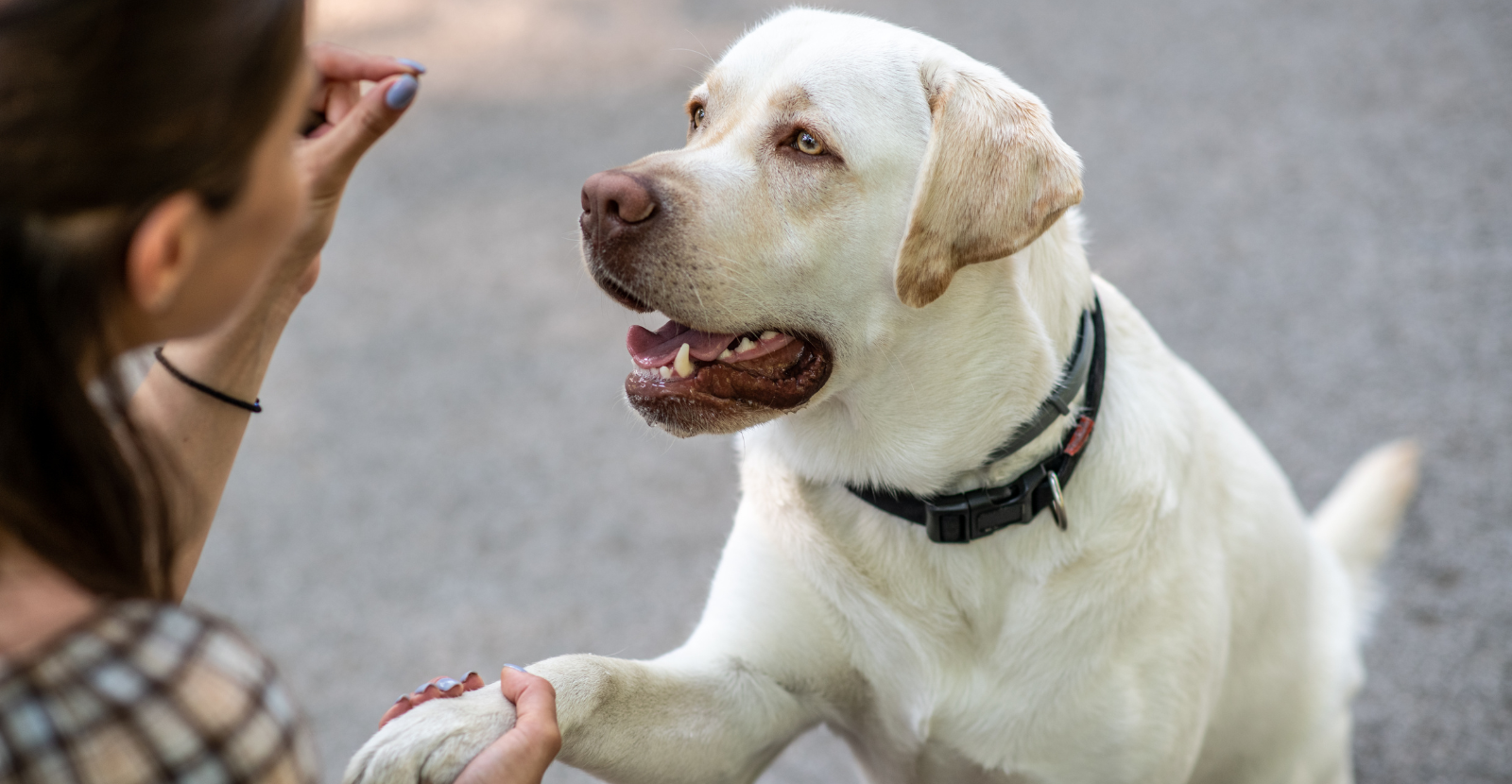We’re celebrating Mixed breeds, which are sometimes called Mutts, because July 31 is National Mutt Day! What exactly is a Mixed breed? How do they differ from designer dogs and what are the most common types out there? Wouldn't it make sense that a majority of the dogs out there are mixed breed? And if all dogs have specific health problems, what are the Mixed breed's top health problems? Spoiler alert: when you mix breeds, they get the best of each breed, but also the health problems associated with it. This is why Mixed breeds are a high-risk dog for getting a joint disease of arthritis in dogs.
Learn all this and more as you read this tribute to all the Mixed Breed Mutts we've loved before...
What’s a Mutt?
Mixed breeds are sometimes tagged with the nickname mutt. Some think mutts are something only a fur-baby's mother could love. We would argue that all dogs are unique and beautiful, especially those mixed breed dogs! But that said, let’s clarify the terminology.“Mutts” or "Mixed-breed" refers to any dogs descending from two or more different breeds. These dogs came about without human intervention or selection. On the other end is the “Crossbreed” or “Designer” dogs, which have been bred with human interaction and selection. However you look at it, mixing breeds has often been a way to bring the best qualities of two different dogs into one.

What is the population of mixed breed dogs?
In Australia, there are nearly 4.8 million dogs. Mixed breed dogs are the most popular among Aussies. Some sources estimate mixed breed dogs making up nearly 30% of the dogs across the country. Here are the top mixed breeds in Australia:


2. Kelpie x border collie (17%)
3. Bull Arab x Staffy (12.2%)

4. Maltese x Shih Tzu (11%)

5. Border collie x kelpie (9.1%)
6. Mastiff x staffy (8.5%)
7. Boxer x staffy (4%)
8. Jack Russel x pug (3.2%)
9. Labrador x rottweiler (3%)
10. German shepherd x rottweiler (3%)
The Truth About Mixed Breed Dogs

Mixed breed dogs often bring out the best in each breed of dog it is mixed with. For example, one of the most common cross breed dogs are Labradoodles, the combination of a Labrador Retriever and a Poodle. This is because Labs are known to have great dog personalities for families, while Poodles have hypoallergenic furry coats. A perfect combination.
However, one thing to keep in mind is that they also bring the health problems of both breeds to the dog as well. For example, since both the Labrador Retriever and the Poodle are at high and very high risk for arthritis, you can guess that your Labradoodle will be at a very high risk for arthritis.
Top Health Problems of Mixed Breeds
Mixed breed dogs will always be relatively healthy, compared to other dogs. They are combined to have the best of both breeds of dogs. Some, by accident. Some, on purpose. Be sure to remember these problems that mixed breeds will be more suspect to:
- Obesity. This is considered an epidemic in the human population as well as the pet population. 56% of dogs are considered to be obese. This shouldn’t be surprising as in 2011, 69% of adults over age 20 are overweight or obese.
- Joint Problems. Most mixed breeds have an athletic build and are usually excellent hunters or runners. This often means that at some point in the mixed breed dog’s life, they will suffer from joint problems. Usually in the hip and knee joints, which is called hip dysplasia or patellar luxation. This causes pain and impacts mobility of your mixed breed, especially as they age.
- Osteoarthritis, or arthritis. Because of the joint problems they have, Mixed breeds are at very high-risk for osteoarthritis. Check out all the risk factors.
No matter what type of breed your dog is, you can bet they are like us: they still feeling young inside. It's these health problems outlined which might slow them down.
Prevention is the Key
It’s always best to prevent problems, rather than try to fix them afterward. Mixed breeds can start to slow down sooner than expected due to joint pain or arthritis. Here are some tips to keep your mixed breed healthy and happy, longer in life:
- Prevent signs of arthritis before they start! Joint supplements can promote joint health and cartilage development which keep dogs active and youthful, longer. Learn what to look for in joint supplements for your dog.
- If your Mixed Breed dog is over age 5, consider starting them a joint supplement as cartilage improvement can be seen with a daily dose.
- Of course, make sure your dog is still active to help their joints work better. This includes regular walking and playing with your dog. A great opportunity to go to the dog park!
- Keep the weight down for your dog. The heavier the dog, the more pressure on their joints. Every bit of exercise and proper feeding amounts will help as they age.
Glyde Chews: A Mobility Supplement
Parnell Living Science are the experts on osteoarthritis (OA) of arthritis in dogs. We created a unique formula with key anti-inflammatory ingredients to combat the signs of aging. Glyde uses natural, gluten-free ingredients to promote healthy joints to let your dog live the life they deserve. Glyde is the only supplement which contains proven levels of three key ingredients working to relieve the painful signs of arthritis.
Glyde's proven formula has all-natural ingredients and high levels of glucosamine and chondroitin, plus Green Lipped Mussel (GLM). The power of these ingredients combined is what gives Glyde it's power:
- New Zealand Green Lipped Mussel (GLM): A powerful anti-inflammatory
- Glucosamine: Reduces cartilage degradation
- Chondroitin Sulfate: Helps rebuild cartilage
Our Beagle Mixed Breed
Some do not need a DNA kit to tell what our mutts, or mixed breed dogs, are made up of. My dog, Lucky beagle, is actually a Beagle mixed with a King Charles Cavalier Spaniel. They called her a "Beaglier." The best thing is she looks like a beagle, but has softer hair like a King Charles and she doesn't do the trademark beagle howling. However, since both breeds are at medium risk for arthritis, it was no surprise when we found out Lucky had arthritis. You can find our story of our beagle and how she is better in our ebook: Arthritis in Dogs: A Guide for Pet Parents.
Did you know? AKC Loves Mutts!
It used to be people looked down upon Mutts, or mixed breed dogs. Now, they are accepted throughout society, even at one of the most exclusive dog clubs. People still think that the American Kennel Club (AKC) snubs mixed breed dogs. But that is simply not true. Mixed breeds are allowed to be part of the AKC and they currently have 250,000 dogs enrolled in the organization since they began accepting them in 2009. In 2014, for the first time ever, the AKC allowed mixed breeds to participate in the prestigious 2014 Westminster Dog Show in the agility portion of the show. Here's a great video of how one mutt stole the show! Check out this video of a dog that was adopted from a kennel by their handler. So fun!
Of course, we are somewhat biased here at Parnell Living Science. Many of us have adopted dogs which are mixed breeds. We know there is true beauty in the mixed breed dog. So now, let’s celebrate what mixed breed dogs really do: make our every day lives even better!














